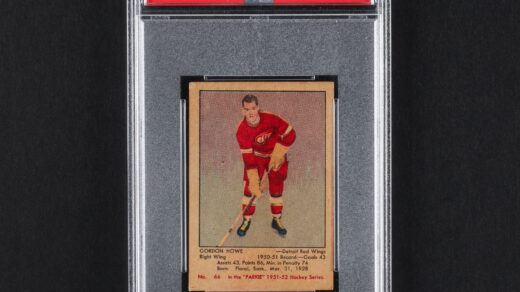There’s a particular pull, a magnetic allure so to speak, to the 2001 Upper Deck Tiger Woods rookie card that continues to captivate collectors, drawing them back again and again to its simplicity and its story. Much like a comet in the golf collecting universe, this card appears with an unwritten expectation of awe and reverence.
From the very first glance, this card acts as a time machine, whisking you back to the height of Tiger’s domination, a period when golf leapt from the sports sections into the very forefront of public consciousness. Every win by Tiger turned Sunday’s greens into veritable arenas, and this card captured that seismic shift on glossy cardboard.
The design of the 2001 Upper Deck Tiger Woods rookie card is understated yet instantly legendary. There’s no clutter, no confusion. It’s simply Tiger in his resplendent glory—an image that needs no elaborate introductions. For collectors, it’s a trophy, a nostalgic artifact that encapsulates the dawn of a new golf era. Its layout is as clean and crisp as a well-struck iron shot, the perfect representation of Tiger’s own immaculate style on the fairways.
Considered a quintessential blue-chip card, it straddles the lines of being abundantly available yet perpetually in demand. It neither sits idly in the marketplace nor feels unattainable. Instead, it behaves like a well-allocated resource—scarce enough to incite desire, yet plentiful enough to keep the trade winds flowing. This summer, the PSA 10 graded versions have been particularly steady performers at auction, often fetching prices between $300 to $350.
Data geeks ought to revel in the troves of transaction information available. Platforms like Card Ladder illustrate the steady heartbeat of this legendary card, showing end-of-August sales in the mid-$200s. Such results align well with recent eBay data, where sales typically range from $220 to $325. There’s an inviting predictability in these numbers. Yet, within these spreads lies room for the discerning collector. Nuances like eye appeal and timing can tip the scales, allowing eagle-eyed bidders to snag deals on days when the auction crowd is less dense.
Perhaps, its staying power lies not just in its association with Tiger but in its purity. This isn’t an obscure promo card or some transient parallel, but rather a flagship item—a spearhead of Upper Deck’s venture into mainstream golf cards. It sits proudly at the pinnacle of Tiger’s cardboard narrative, a sentinel of simplicity that refuses to fade into obscurity. This appeal translates into liquidity, with collectors always able to find suitors willing to engage in trade or purchase.
The card’s conditions add another layer of intrigue. Many graded examples exist, yet the scarcity of pristine corners and flawless centering ensures that gem mint PSA 10s remain a prize. The leap in value and acclaim from PSA 9 to PSA 10 stems from these minute details, making every search for perfection a thrilling hunt.
Despite its age, the design has aged with an elegance surpassed only by a fine wine or an old library book. Its photograph is tasteful, the borders unobtrusive, and the back presents information with brevity—appealing to any level of golf enthusiasm.
Collectors are drawn to it from varied perspectives, each finding a connection that makes perfect sense. It anchors the reawakening of golf card interests under a major brand for some, presents a clean avenue to own a piece of Tiger’s legacy for others, and provides a rich comp history that promises liquidity. It’s often the singular golf relic kept by those who only reserve space for one.
Budgeting to own a PSA 10 version is as straightforward as slicing into a freshly baked pie. Evening eBay auctions illuminate the current market pulse, with most prices playing hopscotch within the $300 to $350 parameters. Patience during these moments can often yield a gem; remaining vigilant for centered, bright copies never goes unrewarded.
For the daring soul still enthralled by the thrill of the hunt, there’s always the potential to uncover a 2001 Upper Deck Tiger Woods rookie in modern sports card repacks. Nestled within Silver, Gold, and Platinum Galaxy Rip Packs, such a treasure could elevate a simple ripping session into a memorable tale shared over a pint or two.
This card elegantly merges nostalgia with modernity, reminding holders of a time when Tiger transformed golf and Sunday afternoons akin to rock concerts, while seamlessly integrating into contemporary collections relied upon auction comps and pop reports on your smartphone. It is an eloquent masterpiece of cardboard storytelling—a snapshot of Tiger’s erstwhile magic and a testament to his lasting influence on a golf card community that, much like the sport itself, cherishes both its history and its present.




